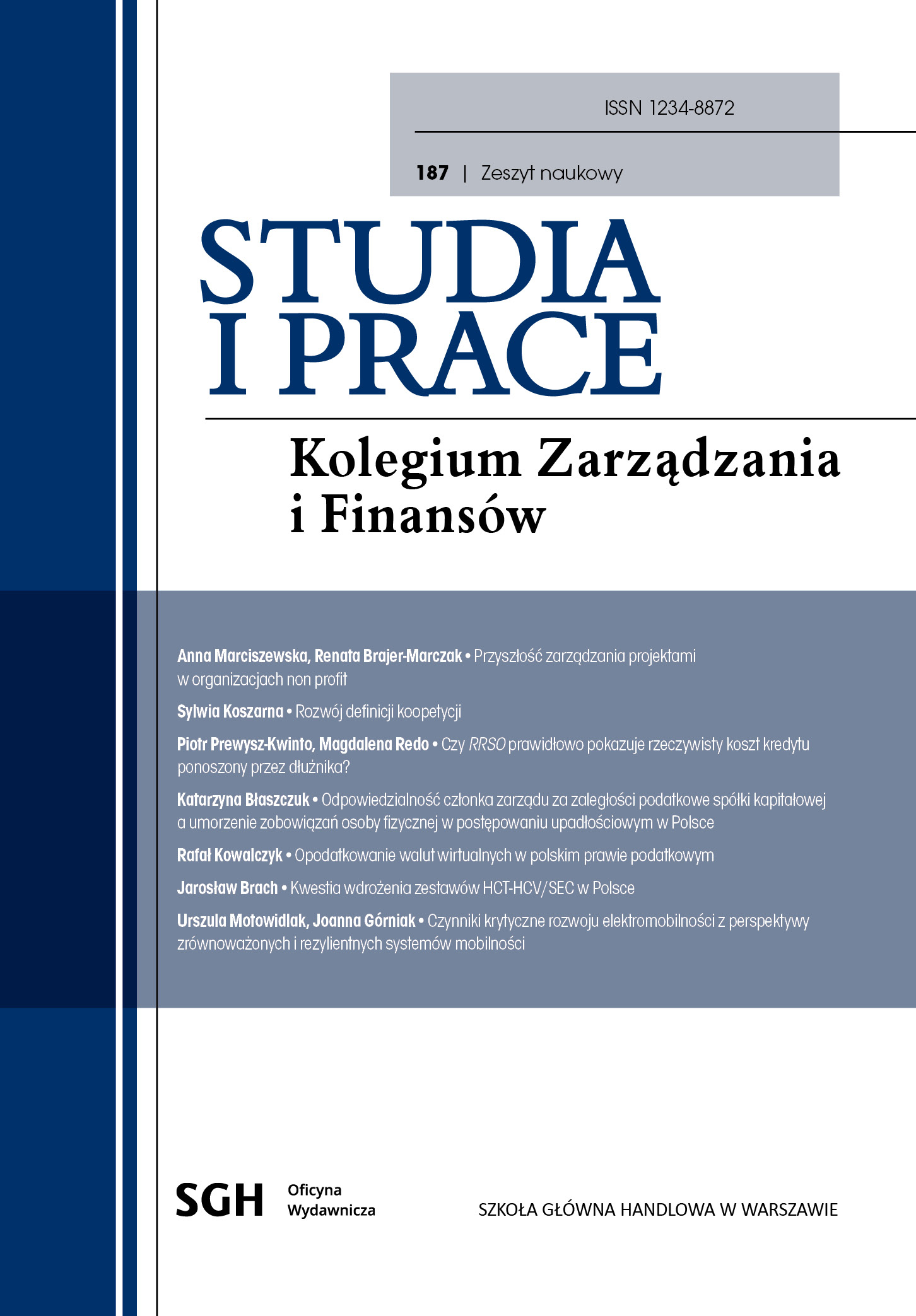Czy RRSO prawidłowo pokazuje rzeczywisty koszt kredytu ponoszony przez dłużnika?
Does the APRC correctly show the real cost of the loan paid by the borrower?
Author(s): Piotr Prewysz-Kwinto, Magdalena RedoSubject(s): Financial Markets, Socio-Economic Research
Published by: Szkoła Główna Handlowa w Warszawie
Keywords: loan; investment; APRC; capitalization; compound interest; interest rate; noninterest loan costs;
Summary/Abstract: The Annual Percentage Rate of Charge (APRC) is currently the most popular in all EU countries and at the same time the most important indicator determining the total cost of debt, aimed at facilitat ing the selection of the best (the cheapest) loan product. This study, as one of the first, contests the in formative value of this very popular indicator, which has been calculated in Poland for two decades now. Due to the complexity of the problem, the authors of this study focused only on proving that the APRC, contrary to the definition contained in the Consumer Credit Act, which introduced the obliga tion to calculate and publish the value of this measure, does not show the true (i.e. actual) cost of debt. Moreover, they explained that the main reason for this was a wrong assumptions made in the EU when establishing the formula for calculating this indicator that a loan for the debtor is an investment and that the borrower’s point of view is the same as that of the lender. As a result, the APRC formula uses the methods of financial mathematics created for the world of investment, and inconsistent with the assessment of the cost of debt. In order to convince their thesis to be correct, the authors prove that the application of the APRC formula results in a false cost of debt (i.e. overstated or underestimated to a different extent – depending on the conditions of the loan product), which confirms that the APRC indicator does not show what we commonly think and what – according to the definition included in the Consumer Credit Act – should show. The conclusions contained in the study are important for all people planning to take out a loan in the future, taking into account the value of this popular in dicator. Moreover, they are an appeal to institutional entities in Poland – to the legislator, supervisory institutions, financial institutions, financial portals, media and finally public figures – to stop propa gating erroneous information about the APRC indicator and to help in introducing changes to its in formational value in the Consumer Credit Act and in the dissemination of correct information about what the APRC really is.
Journal: Studia i Prace Kolegium Zarządzania i Finansów
- Issue Year: 2022
- Issue No: 187
- Page Range: 57-72
- Page Count: 16
- Language: Polish

